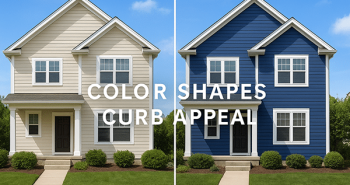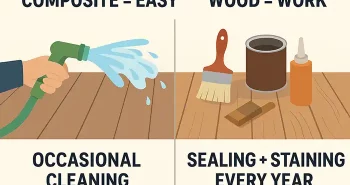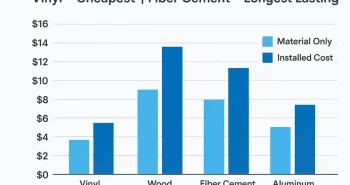Unfortunately, many homeowners overlook this essential system until problems appear: mold growth, sky-high energy bills, ice dams, and even structural damage. At First Star Exteriors, we’ve seen how poor ventilation can quickly turn into expensive repairs.
In this guide, we’ll explore the most common problems caused by poor attic ventilation—and how to prevent them.
What is Attic Ventilation and Why Does It Matter?
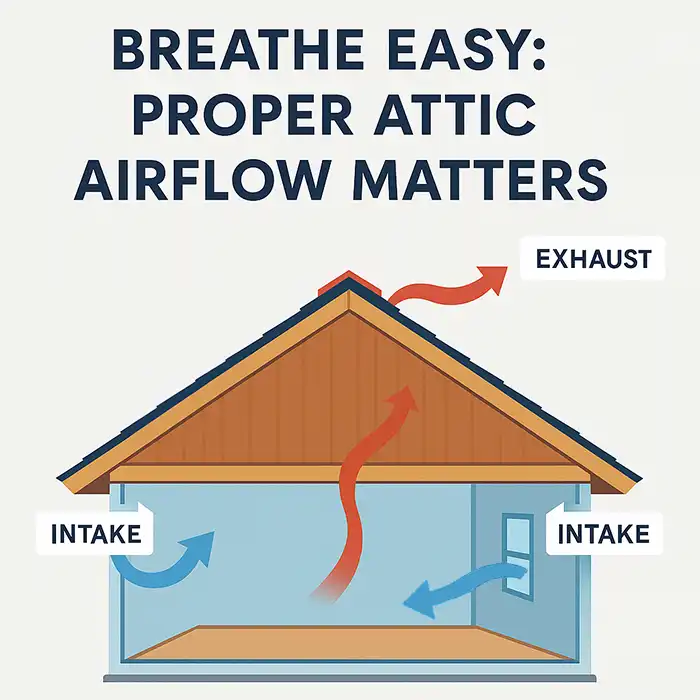
Attic ventilation is the system that lets hot, humid air escape while allowing cooler, drier air to enter. This natural exchange keeps your attic environment balanced.
Without proper ventilation, heat and moisture get trapped, which can:
- Damage shingles and roof decking
- Increase utility bills
- Encourage mold and mildew growth
- Shorten your roof’s lifespan
In short: a well-ventilated attic keeps your home healthier, more energy-efficient, and safer.
Types of Attic Ventilation Systems
- Ridge Vents – Installed at the roof peak to allow hot air to escape.
- Soffit Vents – Found under eaves to pull cooler air into the attic.
- Gable Vents – Openings in gable walls for cross-ventilation.
- Power Vents – Electric fans that actively remove hot air, ideal for larger homes or hotter climates.
The best systems often combine soffit and ridge vents to create a balanced intake and exhaust flow.
8 Common Problems Caused by Poor Attic Ventilation
When ventilation is neglected, a range of costly and dangerous issues can arise. Here are the most common problems we see:
1. Excessive Heat Buildup
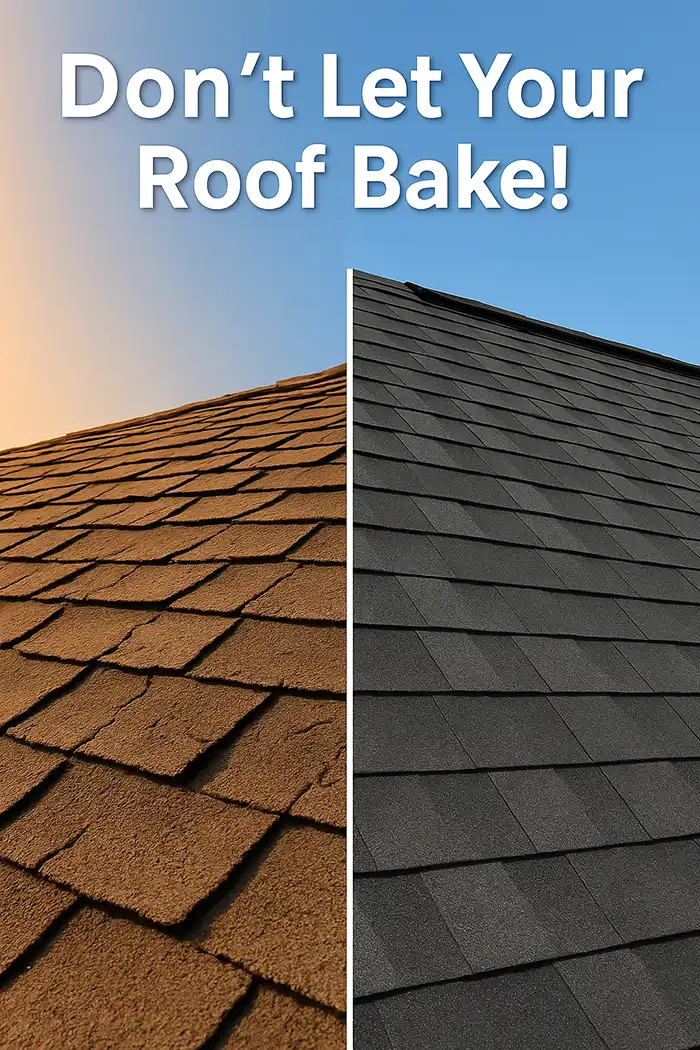
During summer, attic temperatures can soar to over 150°F if air isn’t properly circulating. This extreme heat:
- Bakes shingles, causing them to crack or curl
- Warps wood structures
- Forces your HVAC system to work harder
The result? Shortened roof lifespan and higher cooling costs.
2. Moisture and Mold Growth
Everyday household activities (cooking, showering, laundry) release moisture that rises into the attic. Without ventilation, that moisture lingers and condenses—creating a breeding ground for mold and mildew.
Left unchecked, this leads to:
- Musty odors inside the home
- Rotting wood structures
- Potential health risks for your family
3. Sagging Roof Decking
Moisture damage weakens roof decking, causing it to sag or bow. A sagging roof not only looks concerning but also:
- Reduces structural integrity
- Creates uneven surfaces for shingles
- May require full roof replacement if ignored
4. Ice Dams in Winter
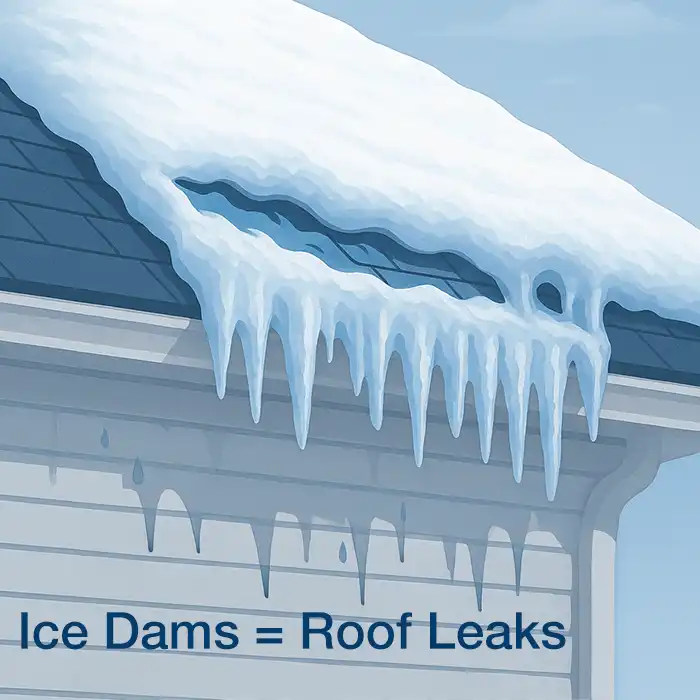
In colder climates, poor attic ventilation contributes to ice dam formation. Warm attic air melts roof snow, which refreezes at the eaves. This creates ice ridges that:
- Prevent proper drainage
- Damage shingles and gutters
- Lead to interior leaks
Balanced ventilation and insulation are the best defense against ice dams.
5. Reduced Energy Efficiency
Poor airflow allows trapped heat to seep into your living spaces. This makes your HVAC system work harder, which means:
- Higher monthly energy bills
- Increased wear and tear on HVAC equipment
- Less consistent indoor comfort
6. Shortened Lifespan of Roofing Materials
Excess attic heat accelerates shingle aging, causing blistering, curling, or cracking. Moisture also promotes algae and moss growth, which stains roofing and reduces durability.
A poorly ventilated attic can cut years off the life of your roof—forcing premature replacements.
7. Pest Infestations
Stagnant, humid attics attract unwanted guests such as:
- Rodents (mice, squirrels, rats)
- Birds and insects
- Termites and carpenter ants
These pests can chew wires, destroy insulation, and introduce serious health hazards.
8. Structural Damage Over Time
The combination of heat, moisture, and pests eventually compromises the attic’s structure. Rafters, beams, and roof decking may rot or warp, threatening the stability of your entire roof system.
How to Prevent Problems Caused by Poor Attic Ventilation
The good news? Most ventilation problems are preventable with the right care. Here’s how:
- ✅ Schedule regular roof and attic inspections
- ✅ Keep soffit and ridge vents clear of debris
- ✅ Consider power vents for larger homes or hot climates
- ✅ Seal attic air leaks to reduce moisture infiltration
- ✅ Work with a trusted roofing contractor like First Star Exteriors
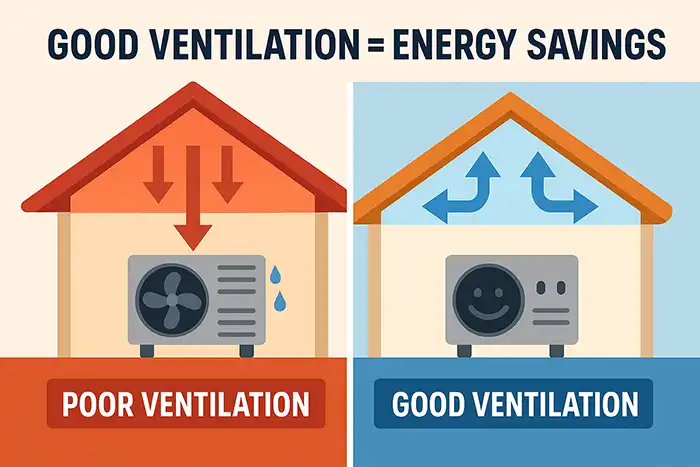
FAQs About Attic Ventilation
How do I know if my attic ventilation is poor?
Signs include high energy bills, musty odors, uneven roof temperatures, or condensation in the attic.
Can poor attic ventilation damage my roof?
Yes. It can warp decking, shorten shingle lifespan, and cause leaks.
Will adding more vents fix my ventilation issues?
Not always. Ventilation must be balanced between intake and exhaust. A professional can determine the best solution.
Can attic ventilation lower my energy bills?
Absolutely. Better airflow reduces attic heat, making it easier for your HVAC to keep your home comfortable.
What is the best type of attic ventilation?
Most homes benefit from a combination of soffit and ridge vents, but the best system depends on your roof design.
Do I need a professional to fix attic ventilation?
DIY fixes can help, but professional inspection ensures long-term performance and peace of mind.
Conclusion: Protect Your Home with Proper Attic Ventilation
Poor attic ventilation isn’t just an inconvenience—it’s a hidden threat to your home’s health, comfort, and energy efficiency. From mold growth to roof damage, the risks are costly if ignored.
At First Star Exteriors, we specialize in identifying ventilation issues and delivering cost-effective solutions to keep your home safe.
👉 Contact First Star Exteriors today for a free attic ventilation inspection and receive a detailed quote within 48 hours.


